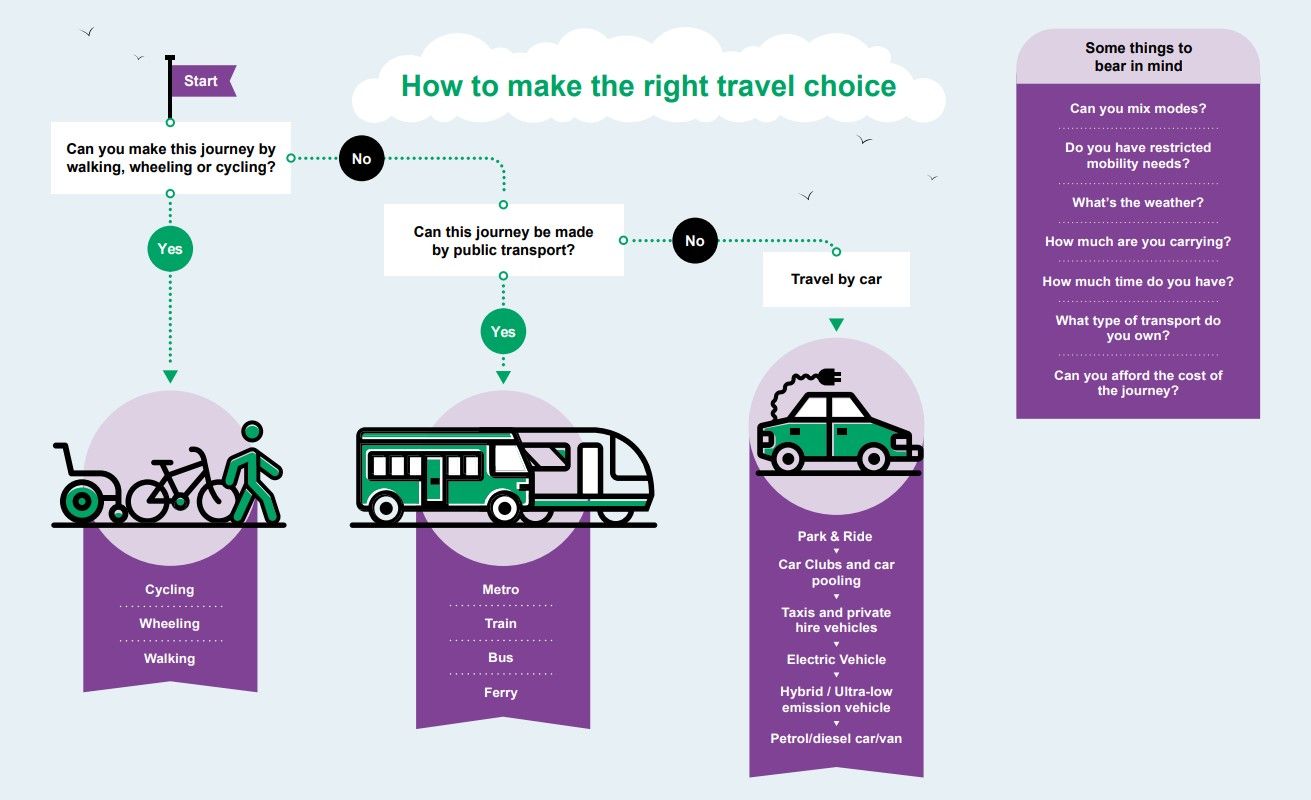Active travel: the benefits for businesses and for the environment
One of the ways businesses can reduce their carbon footprint is by encouraging their staff to choose active travel, instead of using cars or public transport. But what are the benefits of active travel, for businesses and for individual staff members? Georgina Cocker from Transport North East, which delivers transport initiatives in the region on behalf of the North East Joint Transport Committee, explains.
Firstly, what is meant by ‘active travel’? Does it include public transport?
Active travel is all about getting from A to B by walking, wheeling (which includes journeys by wheelchair) or cycling, instead of going by car or public transport. Although choosing public transport over driving will of course help businesses reduce their carbon footprint, active travel has even more benefits and is a really important element of creating a healthier and greener North East for everyone.
Is active travel feasible for people who have longer journeys to work?
We know that sometimes – especially for longer journeys – travelling in a car can be necessary, but you can still reduce carbon emissions by looking at options like car shares or park and ride. And for medium to longer journeys, electric bikes (e-bikes) could be an option, or you could use a combination of public transport and active travel.
We’ve created an infographic which can help people explore the various options for journeys of all lengths:

Encouraging people to choose active travel can obviously have a positive impact on emissions and congestion. But what are some of the other benefits for staff and for businesses?
Choosing active travel leads to a more active workforce overall, and an active workforce has been shown to have lots of benefits, both for employers and for individuals.
Staff who are active during their working day are more productive, take fewer sick days and are more focused. Walking also has benefits for mental wellbeing and reducing stress. In fact, the potential health benefits of active travel are huge: in the early 1970s, improving public health in Finland became a priority. A programme including promoting active travel meant that in four decades, there has been an increase in life expectancy of almost 11 years for men and 9 years for women.
And of course, choosing to walk, wheel or cycle can significantly reduce people’s travel costs.
For you as a business owner, it can lead to a reduced need for office parking spaces and it can also save time, especially when travelling in congested cities, which benefits everyone.
How can businesses encourage their staff to travel actively?
To start with, try to establish a baseline so you know how many of your team drive, how many use public transport and how many already use active travel. You can do this using a staff survey – remember to include an option for people who use multiple modes of transport, for example, cycling to a Metro station.
Next, review your infrastructure. If people have access to facilities like showers and lockers, it will be much easier for them to choose to use active travel to get to and from work.
It’s important to provide information for your employees on the various ways they could travel. The Go Smarter Go Active Cycling and Walking Map covers Tyne and Wear, County Durham and Northumberland, and it helps you map routes with walking, wheeling and cycling options.
And you can consider using travel challenges to keep people motivated. Why not have monthly or quarterly competitions to see who has travelled actively for the most journeys?
Because health benefits are such an important element of active travel, don’t forget your team members who work remotely or from home. Even if they don’t have a commute, encouraging a ‘fake’ commute each morning, or a lunchtime walk, is a great way to increase activity and therefore productivity. Even 15 minutes before work or in the middle of the day can make a difference!
What other support is available that can help staff plan their journeys?
There is lots of support on offer for both workplaces and staff to help you make active travel an accessible choice for your team, including:
Walking maps via the app Go Jauntly
Active and multimodal travel information via Sustrans
Find out how you could set up a cycling to work scheme through organisations like Bike2Work Scheme, CycleScheme or Green Commute Initiative.
Become a cycle friendly employer with We Are Cycling UK
The government’s Cycle to Work scheme
Find more ways you can reduce carbon emissions in your business, in our net zero toolkit.
